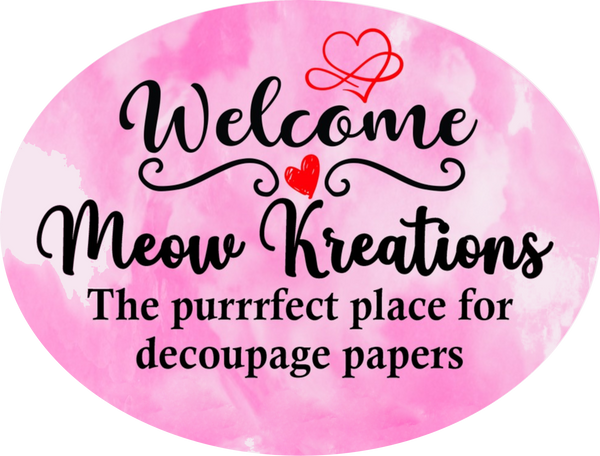STEP ONE: Prepare Your Surface
Almost any surface can be used to create a decoupage project. Suitable surfaces include wood, papier mache, terra cotta, tin, cardboard and glass, but are almost endless.
Mulberry rice paper (as well as napkins) gives a more vibrant effect if applied to either a white painted surface or on top of pre applied mulberry rice paper. The choice is yours depending on the finished effect you are looking for.
Give the object you’ve chosen to decoupage the once-over with a damp cloth, removing any debris, dirt or dust. Just be sure it’s completely dry before you start.
Tip: Apply white paint with a sponge not bush to get an even surface without brush strokes.
STEP TWO: Tear Images to Fit Your Surface
Measure as necessary, with a ruler and a pencil, and tear your images to fit the space you are wanting to cover. Add interest to your design by using large and small pieces, layering and overlapping elements and coordinating colours. Before gluing lay the pieces out and move them around until you are happy with the placement and overall look of the pieces. Do not cut around the images as the hard edges won’t blend as much and will be more noticeable on the finished item.
Tip: Take a photo to remember the placement of your paper pieces. It’s easy to forget once you remove them and start decoupaging. Remember that many of my rice papers are pre sized to fit coasters and wine bottles so are particularly ideal for beginners.
STEP THREE: Glue Each Element
Always start with the underlying design elements and work your way upward (when layering). Apply a medium coat of PVA glue to the surface of your project and gently lay your images from step two. Mulberry rice paper wrinkles much less than napkins but it may be possible that you will get one or 2 bubbles arise, pop them with a pin and gently smooth the surface using your fingers or ball of cling film.
Keep smoothing until all of the bubbles are gone.
Tip: When decoupaging on plastic, experiment before you commit. For rougher surfaces, the pictures should adhere but will take a little longer to dry. If the surface is very smooth, consider roughing it up with a little sandpaper.
Coat with a second layer of glue, let dry, and then continue to add coats until the surface of the decoupage is completely even.
Tip: If you are decoupaging coasters, you will need to seal with several coats of a heat resistant varnish. If your item is to be displayed outside, your varnish will need to be weather proof.
STEP FOUR: Enjoy!!
Sit back and marvel at your work. Practice really does make perfect so experiment and have fun!
